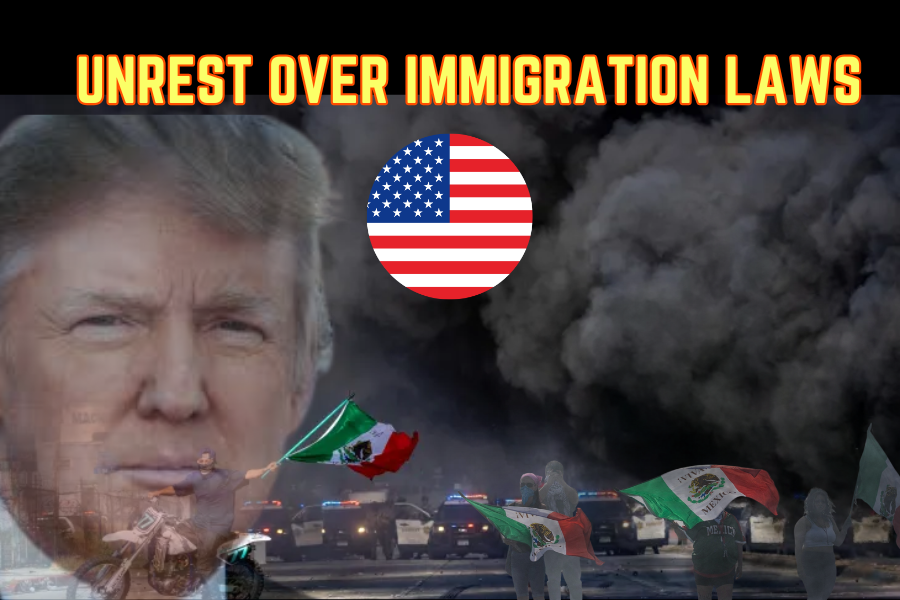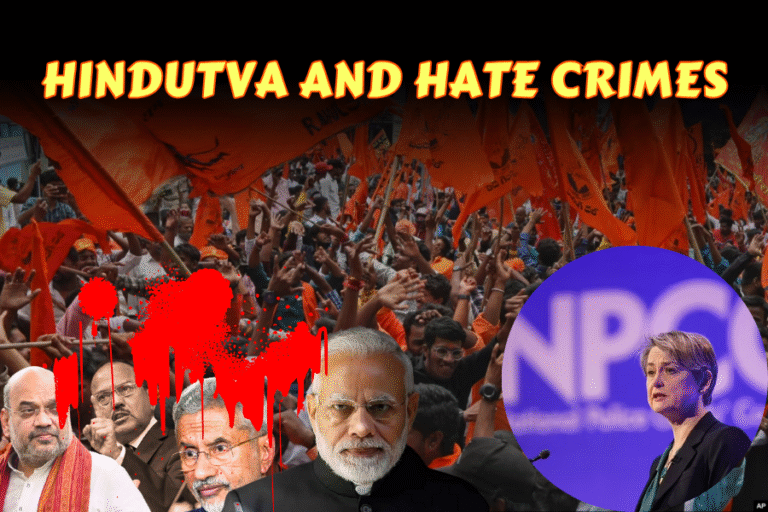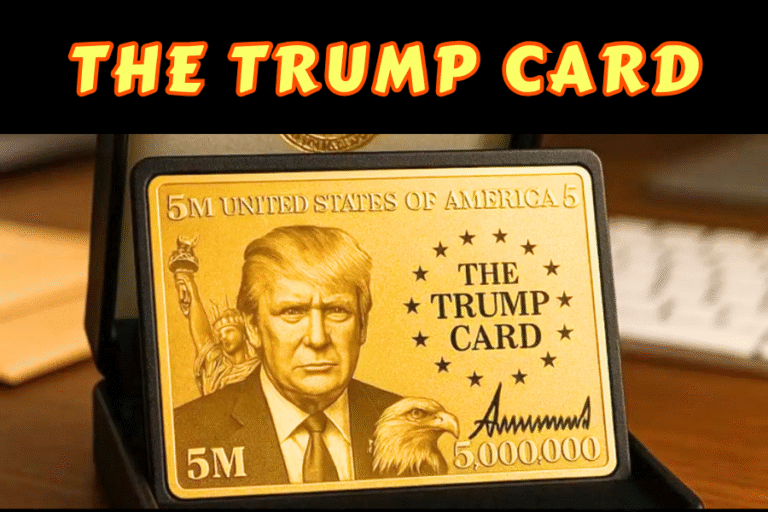(By Khalid Masood)
In early June 2025, Los Angeles became the epicenter of a national firestorm over immigration enforcement, as protests against Immigration and Customs Enforcement (ICE) raids erupted into clashes with law enforcement. Sparked by aggressive federal operations targeting undocumented immigrants, the unrest spread from California to cities like New York, Chicago, and Atlanta, fueled by President Donald Trump’s deployment of National Guard troops and Marines. With over 500 arrests in Los Angeles alone and a new travel ban stoking tensions, the demonstrations reflect deep divisions over immigration policy. This article, grounded in impartial analysis, explores the unrest’s origins, the policies driving it, the responses from officials and activists, and the broader implications for U.S. governance and society.
The Catalyst: ICE Raids in Los Angeles
On June 6, 2025, ICE agents conducted raids across Los Angeles, targeting businesses like Ambiance Apparel in the Fashion District and a Home Depot parking lot, arresting 118 undocumented immigrants for visa violations. These operations, part of Trump’s pledge for “the largest domestic deportation operation in American history,” triggered immediate backlash. Protesters gathered at raid sites, with some blocking detainee transport vans, prompting law enforcement to use tear gas and pepper spray. By June 8, demonstrations escalated, with 300 California National Guard troops deployed to federal buildings, followed by 700 Marines from Camp Pendleton and 2,000 additional Guardsmen, authorized by Trump over Governor Gavin Newsom’s objections. Social media amplified the unrest, with X posts framing the raids as “sowing terror” in Latino communities.
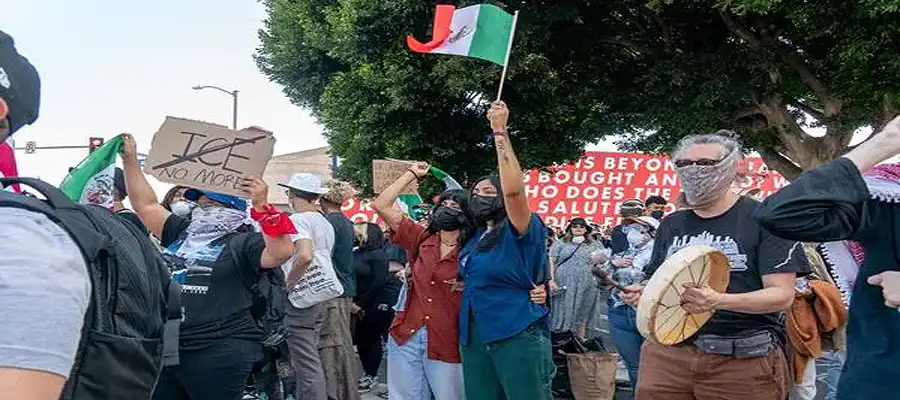
Policy Context: Trump’s Immigration Crackdown
The unrest stems from Trump’s immigration policies, enacted upon his January 20, 2025, inauguration. Executive orders mandated stricter border enforcement, revoked humanitarian parole for 500,000 migrants from Cuba, Haiti, Nicaragua, and Venezuela, and terminated Temporary Protected Status (TPS) for Nepal and Cameroon. A January 23 DHS memo empowered agencies like the DEA and ATF to assist ICE, aiming for 2,000 daily arrests, up from 311 under Biden. A new travel ban, effective June 9, barred entry from 12 countries, including Afghanistan and Iran, citing security risks. These measures, justified by Trump as protecting “national sovereignty,” have drawn legal challenges, with California suing over the “unlawful” National Guard deployment. Critics argue the policies target low-crime immigrant communities, noting undocumented immigrants’ crime rates are lower than native-born citizens’.
Escalation and Spread of Protests
By June 9, Los Angeles protests grew violent, with demonstrators hurling rocks, fireworks, and Molotov cocktails, leading to 197 arrests on June 10 alone. Mayor Karen Bass imposed an 8 p.m. curfew in downtown’s one-square-mile area, citing 29 looted businesses and graffiti on LAPD headquarters. Clashes on the 101 Freeway saw 17 arrests by California Highway Patrol. Protests spread to San Francisco (150 arrests), Santa Ana (200 demonstrators), and beyond California to New York’s Foley Square, Chicago’s Trump Tower, and Atlanta’s Buford Highway, with 25 rallies nationwide by June 11. Activists, waving Mexican flags and chanting “Nobody is illegal,” condemned the raids as “cruel,” while Trump labeled protesters “rioters bearing foreign flags.”
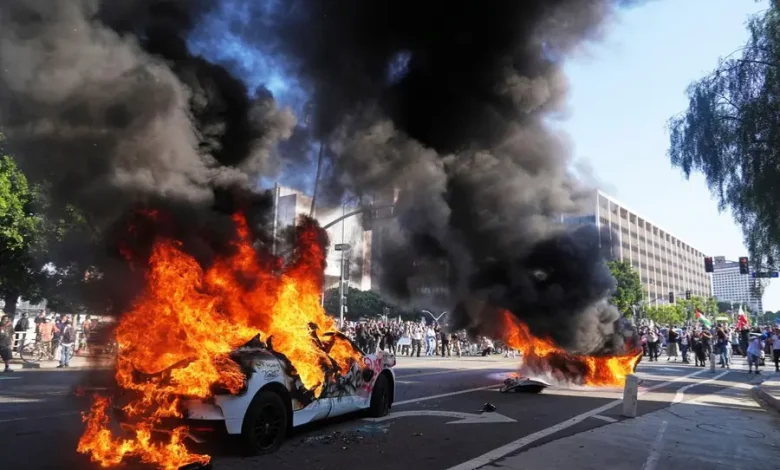
Official Responses: A Divided Landscape
California’s Democratic leaders, including Newsom and Bass, decried the federal response as authoritarian. Newsom filed an emergency motion to block National Guard arrests, arguing they violate the 1878 Posse Comitatus Act, while Bass called Los Angeles a “tinderbox” inflamed by Trump’s tactics. Former Vice President Kamala Harris labeled the raids a “calculated agenda to spread panic.” Conversely, Trump and Defense Secretary Pete Hegseth defended the deployments, with the Justice Department arguing they protect federal property. Texas Governor Greg Abbott deployed the National Guard to San Antonio, signaling Republican support. The Los Angeles County DA vowed to prosecute violent protesters, distinguishing them from peaceful demonstrators.
Community Impact and Activist Voices
The raids have instilled fear in immigrant communities, with 11 million undocumented immigrants in the U.S. (2022 Pew estimate) facing heightened scrutiny. In Los Angeles’ Boyle Heights, a Mexican-American enclave, residents like Christina Berger, 39, expressed heartbreak over potential family separations. SEIU California president David Huerta’s arrest on June 6 for impeding officers galvanized unions, with 1,000 rallying at LAX against the travel ban. Activists from groups like the Immigrant Legal Resource Center offered legal aid, while the “No Kings” movement planned 1,800 protests for June 14, coinciding with Trump’s military parade in Washington. X posts reflected polarized sentiment, with some praising California’s “sanctuary” defiance and others decrying “lawlessness.”
Legal and Political Ramifications
California’s lawsuit, led by Attorney General Rob Bonta, challenges the federalization of National Guard troops, alleging an “illegal power grab.” A federal judge will hear the case, with Newsom warning of a “national crisis.” The Supreme Court’s May 30 ruling lifting a block on CHNV parole terminations signals judicial support for Trump’s policies, though birthright citizenship challenges persist. Democrats face a political bind, as immigration and crime—key Republican issues—dominate discourse. Polls show 60% of Americans favor stricter enforcement, per Gallup 2025, yet 55% oppose family separations. The unrest risks escalating if planned “No Kings” protests clash with Trump’s parade, potentially deepening partisan divides.
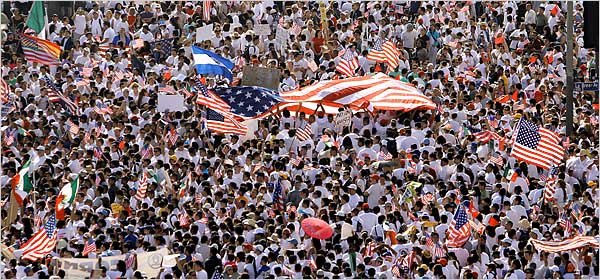
Broader Implications: Governance and Society
The unrest highlights America’s fractured immigration system, unchanged since the 1996 reforms. Trump’s policies aim to deter illegal entry but strain local resources, with Los Angeles reporting $10 million in protest-related damages. Sanctuary cities like Los Angeles, bound by SB 54, face tension with federal mandates, risking funding cuts. The deployment of military forces raises concerns about civil liberties, with Bonta citing Posse Comitatus violations. Economically, immigrants contribute $1.7 trillion annually, per 2024 CBO data, yet deportations could disrupt labor markets, particularly in California’s agriculture and construction sectors. The protests underscore a societal rift, with both sides—pro-immigrant activists and enforcement advocates—entrenched in their visions for America’s future.
Conclusion: A Nation at a Crossroads
The 2025 immigration unrest, ignited in California and rippling nationwide, exposes the fault lines of U.S. immigration policy. Trump’s aggressive enforcement, met with fierce resistance, has transformed Los Angeles into a flashpoint, with National Guard and Marine deployments amplifying tensions. As protests spread and legal battles loom, the nation grapples with balancing security, humanity, and governance. Without congressional reform, the cycle of raids, unrest, and division may persist, challenging America’s identity as a nation of immigrants. The path forward demands dialogue, not tear gas—a resolution rooted in law, compassion, and the public good, lest the unrest of 2025 becomes a harbinger of deeper strife.

